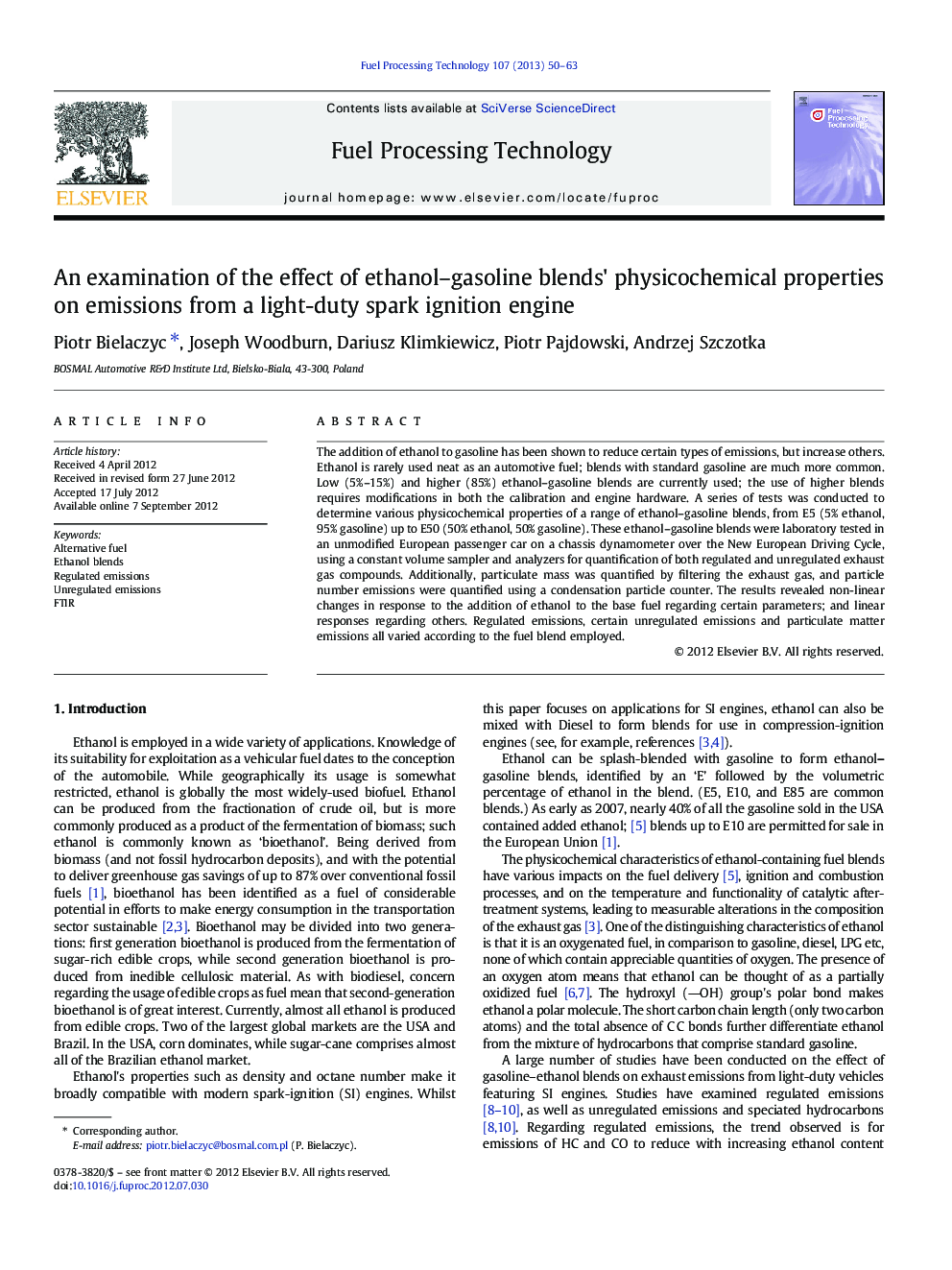| کد مقاله | کد نشریه | سال انتشار | مقاله انگلیسی | نسخه تمام متن |
|---|---|---|---|---|
| 210213 | 461701 | 2013 | 14 صفحه PDF | دانلود رایگان |

The addition of ethanol to gasoline has been shown to reduce certain types of emissions, but increase others. Ethanol is rarely used neat as an automotive fuel; blends with standard gasoline are much more common. Low (5%–15%) and higher (85%) ethanol–gasoline blends are currently used; the use of higher blends requires modifications in both the calibration and engine hardware. A series of tests was conducted to determine various physicochemical properties of a range of ethanol–gasoline blends, from E5 (5% ethanol, 95% gasoline) up to E50 (50% ethanol, 50% gasoline). These ethanol–gasoline blends were laboratory tested in an unmodified European passenger car on a chassis dynamometer over the New European Driving Cycle, using a constant volume sampler and analyzers for quantification of both regulated and unregulated exhaust gas compounds. Additionally, particulate mass was quantified by filtering the exhaust gas, and particle number emissions were quantified using a condensation particle counter. The results revealed non-linear changes in response to the addition of ethanol to the base fuel regarding certain parameters; and linear responses regarding others. Regulated emissions, certain unregulated emissions and particulate matter emissions all varied according to the fuel blend employed.
► Ethanol gasoline blends' properties and regulated/unregulated emissions analysed.
► Regulated emissions and particle mass/number measured according to EU procedures.
► FTIR used to quantify regulated/unregulated emissions before and after the catalyst.
► Regulated emissions showed modest reductions in HC and CO.
► Unregulated emissions showed various responses – some linear; others non-linear.
Journal: Fuel Processing Technology - Volume 107, March 2013, Pages 50–63